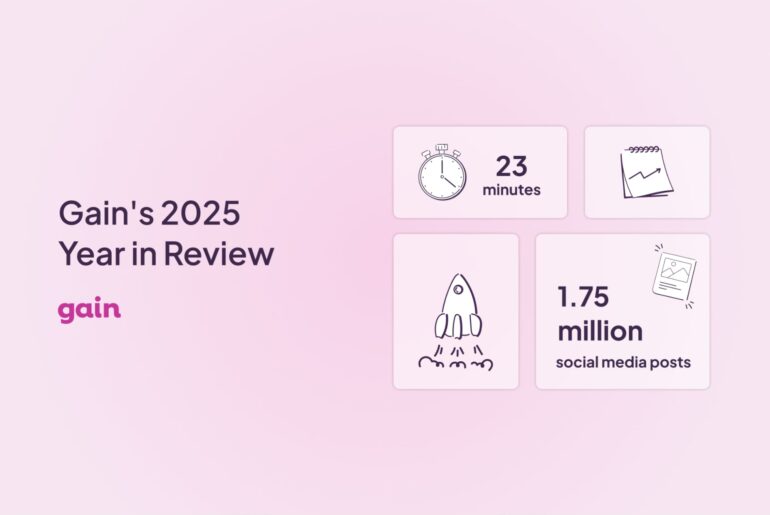 In a results-driven industry, it’s important to make your client happy, and sometimes that involves saying no. Here are a few healthy methods that marketers, or anyone working with external clients or content approvers, can utilize to tell someone that they’re in the wrong.
In a results-driven industry, it’s important to make your client happy, and sometimes that involves saying no. Here are a few healthy methods that marketers, or anyone working with external clients or content approvers, can utilize to tell someone that they’re in the wrong.
1. Be Diplomatic and Communicate Effectively
Diplomacy is crucial when it comes to communicating with your clients. Oftentimes, poor communication can lead to workplace failures. Your clients are entitled to their opinion and (many) suggestions, which is why you can’t tell them that they are flat-out wrong. To avoid belittling them, make sure to provide reasons why they are right, first. No client will be receptive if you list out the reasons why their ideas are bad. Instead, highlight your client’s strong points, and they will be more receptive to hearing your suggestions. In a perfect world, a hybrid solution will be born, that incorporates both of your ideas.
Co-Founder of Omelet, Ryan Fey, likes to add a bit of humor to smooth edges.
No client will be receptive if you list out the reasons why their ideas are bad. Instead, highlight your client’s strong points, and they will be more receptive to hearing your suggestions. In a perfect world, a hybrid solution will be born, that incorporates both of your ideas.
Co-Founder of Omelet, Ryan Fey, likes to add a bit of humor to smooth edges.
“I prefer taking them aside to have a heart-to-heart talk, it’s never good to seem like you’re embarrassing someone. You have to be frank. But I ease into it by cracking a lot of jokes. I try and level the playing field with sophomoric humor.” – Digiday
As with everything, there is a balance in communication. Stay strong and don’t sugarcoat your speech so much that you lose your key points just to save your client’s ego. Be selective in your word choice, and remember there are always more efficient ways to communicate that your team hates an idea. In the end, pick the most critical point that your team wants to get across and hammer that into the conversation until it sticks. Even with the most unreceptive clients, being able to address and agree on just the main critique would be considered a success.2. Stop Sending Long Drawn-out Emails
The days of long-winded email are over, and the most effective method of communication has become a little less formal. With the influx of emails and phone calls in the workplace, messaging tools are also on the rise. When you need to communicate with your client, you should be using the most efficient mode of communication for them, and remember, email might not be the answer. 26% of employees believe that email is a productivity killer, stop wasting your time and theirs. Though face-to-face and email communication are preferred, applications like Slack and Campfire could allow your team to communicate with clients at a faster rate and make it easier to go over any details. The average employee spends 28% of the work week going through emails and 20% searching for internal messages. So if you need to give your client feedback about a project, don’t send them another email with important feedback that could get overlooked. Instead, it might be better to send them a direct message with your concerns. Tools like Slack allow you to create groups and organize your conversations by project, making it easy to go back through archived messages and search for information that can help justify the points you’re trying to make.3. Give honest and Constructive Feedback
Nobody wins with dishonest feedback. Always remember to give the valuable feedback that you would like to receive. A survey revealed that 92% of professionals agreed that negative feedback can improve performance if presented appropriately. And when applied to client relations, by letting them know what isn’t working, your team can follow that up by providing a solution that will provide results that better fit with what your clients originally had in mind. Providing valuable feedback not only applies to more important projects but also to implementing smaller changes. When you give “micro feedback” on a continuous basis, then you can avoid bigger problems in the future.
Providing valuable feedback not only applies to more important projects but also to implementing smaller changes. When you give “micro feedback” on a continuous basis, then you can avoid bigger problems in the future.
“Strategic COMMUNICATION is at the core of effective leadership. Through a leader’s use of verbal and written symbols, employees are motivated or deflated, informed or confused, productive or apathetic. A leader’s ability to carve off the verbal fat and get to the meat of an issue, idea, or plan will find success at every turn.” – Reed Markham, Former speechwriter for the United States Supreme Court
Let’s say your client wants to reboot a campaign that was quite unsuccessful last year but they have plenty of suggestions to make it work this year. If you know that the campaign is not right for your target audience, let your client know that making these edits won’t change the results. Rather than continuing a campaign that is doomed to fail, let your client know exactly why this campaign will be a dud and come up with another idea in its place. In the end, if you continue with the campaign without providing honest feedback, it could reflect poorly on your performance.4. Provide Metrics To Back Your Advice Up
 It’s hard to argue with hard evidence. With all of the analytic tools out there, it shouldn’t be a challenge to show off some metrics to back up your claims. For example, if your client wants to know why you aren’t posting more content in the evenings, but your social posts are performing better during the mornings, then show your client the analytics that conclude mornings are the best time to share content.
Ben Kunz, the SVP of Marketing and Content at Mediassociates, explains why he uses metrics to always back up his opinions:
It’s hard to argue with hard evidence. With all of the analytic tools out there, it shouldn’t be a challenge to show off some metrics to back up your claims. For example, if your client wants to know why you aren’t posting more content in the evenings, but your social posts are performing better during the mornings, then show your client the analytics that conclude mornings are the best time to share content.
Ben Kunz, the SVP of Marketing and Content at Mediassociates, explains why he uses metrics to always back up his opinions:






